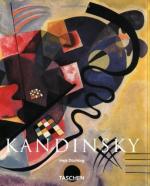|
This section contains 10,138 words (approx. 34 pages at 300 words per page) |

|
SOURCE: "Kandinsky: The Owl of Minerva," in Passion and Rebellion: The Expressionist Heritage, edited by Stephen Eric Bronner and Douglas Kellner, J. F. Bergin Publishers, Inc., 1983, pp. 250-75.
In the following essay, Pester deems Kandinsky and his work an embodiment of the revolutionary ideas spreading throughout Europe during the early twentieth century.
Kandinsky (1866-1944) was one of the foremost philosophers of the abstract expressionist movement in painting. He was an artist of unsurpassed lucidity who refused to choose for the "analytical" against the "mystical/lyrical," and successfully materialized his vision in oils, watercolor, and graphics. At once artist and intellectual, he was the common point of a number of creative vectors, among them Dada, Surrealism, German Expressionism, the Bauhaus, Constructivism, and the many other lively trends in early Soviet art. For example, as a poet, Kandinsky contributed to the Dada review Cabaret Voltaire in 1916; he was instrumental in...
|
This section contains 10,138 words (approx. 34 pages at 300 words per page) |

|


